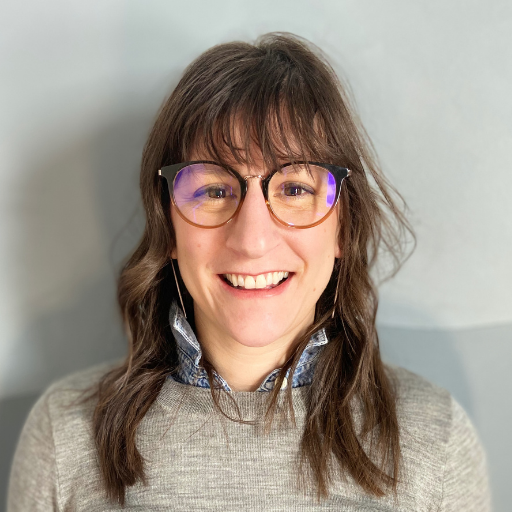|
In a 2019 post for ASCD titled “Mindfulness Won’t Save Us. Fixing the System Will”, Christina Torres (@biblio_phile), an English teacher in Honolulu, situated mindfulness in the conversation on equity and systemic trauma. Mindfulness is not a silver bullet for children who’ve experienced trauma and oppression. It is simply one tool that teachers can use to support students’ readiness to learn and manage emotions. Importantly, Torres highlighted that the problems facing students in oppressed communities are systemic. Torres presented the idea that mindfulness embraces not just the beautiful and pleasant, but also helps us manage the difficult aspects of life. It supports our ability to be present when dealing with tough subjects, just as much as it can help us to notice the world around us. Taking Torres’ work a step further, I share with you work I did using a self-study to investigate my own biases and assumptions to become more anti-racist. I share how mindfulness can support our self-awareness when making critical pedagogical decisions.
Teachers and students should use mindfulness to dig deep into their assumptions, biases, and the consequences of those thoughts. Not sure how this all fits together? Keep reading to learn where mindfulness fits in the conversation about equity! Teachers and Oppression
In Torres’ recognition that mindfulness won’t solve the problems of injustice in oppressed communities and their poorly funded schools, she also points out that teachers are likely to be complicit, however unintentional it may be, in the perpetuation of injustices in schools. We were all born and bred to privilege certain types of knowledge. Many school practices are print-based and Eurocentric, representing the wealthy white males who have held power for centuries. That may be the case, but it is also the case that teachers can do something to become more aware of their unconscious biases. They can also help students to see how biases and assumptions impact actions. That's where mindfulness comes into play.
Self-Study as Mindfulness
I recently chronicled my anti-racism journey, which I am still trekking through. What I am finding is highly applicable to Torres’ thinking on teachers’ complicity in injustices in schools. It is also one location where mindfulness can fit in the equity puzzle for teachers’ (and eventually for their students’) anti-racism journeys.
I undertook a self-study several years ago to begin noticing my white privilege, the assumptions and biases I made about people of color and non-native English speakers, and the consequences of these mindsets. The process of self-study is inherently a mindful one. That is, to notice my biases and the assumptions I made about others as well as the things I take for granted as a white person, I had to pay attention to my thinking and zero in on how I was interacting with the world. I had to start noticing what I was seeing, what thoughts it conjured, and how those thoughts impacted my behavior. Being aware of my biases and assumptions meant being aware of what was going on in my world and in my mind as a result. Admittedly, this exercise was not a typical mindfulness meditation. It was an in-the-moment lurching from the subconscious into the self-conscious brain. Or perhaps even into the conscience. I was being jolted, as I became aware of my biases, and was forcing myself to pay attention to what caused them and where they led my thinking/behavior. What I found was that my assumptions and biases, especially about non-native speakers of English (I live in a very rural and predominantly white and latinx community), were derogatory. I then did conscious work to unravel how those assumptions showed up in my instructional planning. Then, I started to make moves to counter deficit perspectives and become more sustaining of students' cultures. What this Means for Other Teachers
This means that mindfulness and self-awareness is a great first step toward changing your impact on students and helping them change how they see the world and act towards others. When you interrogate your thoughts you can start to move from reinforcing disadvantage and deficit thinking about people of color and non-native speakers of English to being more emancipatory and culturally sustaining. If you never question your assumptions and become mindful of how they impact your instructional decisions (or foster student awareness of how their assumptions impact their actions), you will likely not change to being culturally sustaining.
How it Works
Resources
Below are three helpful resources for learning about white privilege, culturally sustaining pedagogy, and racial identity development.
Conclusion
Christina Torres' 2019 ASCD post on mindfulness and systemic injustice helped me rethink how mindfulness fits in education. Yes, mindfulness is a great tool to help students develop executive function, self-regulation, and to deal with difficult emotions, but it's also a way for teachers and students to grapple with bias and assumption. Read about white privilege and racial identity development, conduct a self-study, write through your assumptions and biases, and question your taken-for-granted pedagogical decisions. Help disrupt systemic injustice that leads to ongoing trauma for people of color by being mindful of your impact on the system.
References:
Helms, J. E. (Ed.) (1990). Black and white racial identity. Theory, research, and practice. Greenwood Press. McIntosh, P. (1990). White privilege: Unpacking the invisible knapsack. Independent School, Winter, 31-36. Paris, D. (2012). Culturally sustaining pedagogy: A needed change in stance, terminology, and practice. Educational Researcher, 41(3), 93-97. Torres, C. (2019). Mindfulness won't save us: Fixing the system will. ASCD. http://www.ascd.org/publications/newsletters/education-update/may19/vol61/num05/Mindfulness-Won't-Save-Us.-Fixing-the-System-Will..aspx
0 Comments
Leave a Reply. |
AuthorMy name is Erin E. Silcox. I'm working on my Ph.D. in Literacy Education, focusing on the intersection of trauma and literacy. I want to deepen our base of knowledge about trauma-informed practices in schools and help teachers apply findings right now. Archives
April 2021
Categories |
||||||||||||

 RSS Feed
RSS Feed